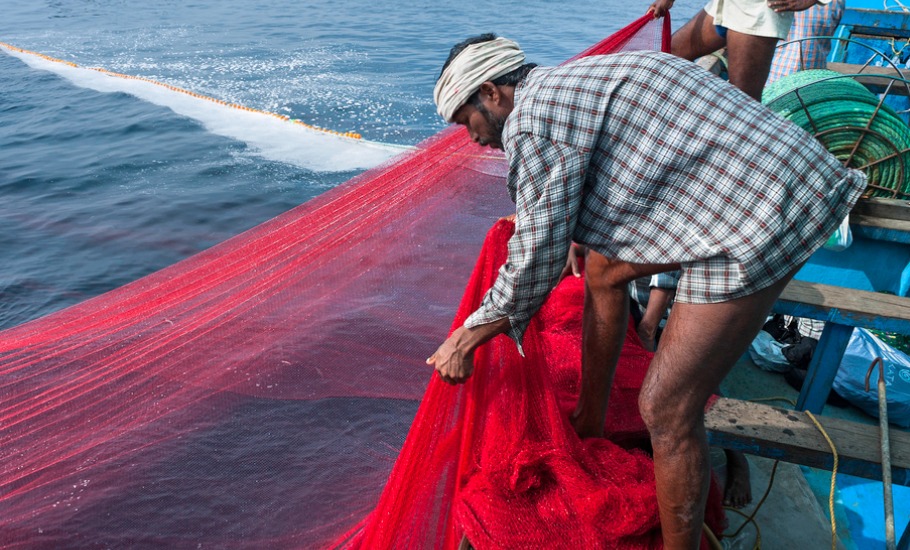
Over 67% of marine fisherfolk families live under poverty line: Report
Over 67 per cent of the families engaged in marine fishery are living below the poverty line in India, according to a report by the ministry of fisheries, animal husbandry, and dairying, and the Down to Earth magazine.

Various sops and a boost in budget allocation by the Centre for the fisheries sector seem to have failed in their objective with over 67 per cent of families engaged in marine fishing languishing in poverty. The poverty figures were quoted in a report by the Union Ministry of Fisheries, Animal Husbandry, and Dairying.
India has an 8,118 km-long coastline spread across 12 states and union territories. There are more than 3,000 fishing villages along the coastline with 8.93 lakh families engaged in marine fishing.
In Tamil Nadu, of the total 2.01 lakh fisherfolk families, around 91 per cent fall under the poverty line. In Puducherry (90.3 per cent) and Karnataka (84 per cent) too, majority of its fisherfolk families are under the poverty line, the report said.
“The traditional fishing communities are poor people who have no other means of livelihood or any other qualification. Small fishermen borrow money from private moneylenders at higher interest rates to build their boats. Thus they get burdened with loans and this further worsens their financial conditions,” said M Ilango, chairperson of the National Fisherfolk Forum.
He said around five lakh families, of the total 8.93 lakh, are living in poverty even though the fisheries business has seen an improvement over the past few years.
“Only 1 to 2 per cent of the fishermen have motorboats or advanced boats. The cost for the hunt of 21 days in a small boat costs lakhs, which is not affordable for the small fishermen. Thus, whatever money they get is spent on their boats and diesel. They also have to take groceries, etc.,” said Ilango.
Related news: 2 yrs after Ockhi, Kanyakumari fishermen feel trapped in a whirlpool of misery
The situation, according to him, is no different for those engaged in large-scale fishing as well. “Even the big fishermen don’t make a lot of profit due to the additional expenditure that they incur on their boats, diesel, and also the payment of workers,” he said.
During the ongoing COVID-19 lockdown, the entire fishing sector witnessed a huge slump with fishing being stopped in most of the places. Even in those areas where production was on, there was no market available for the same.
The three states having coastline of over 4,000 km — Gujarat, Andhra Pradesh and Tamil Nadu — contribute almost half of the marine fish production in the country. These states have produced 18.03 lakh tonnes of the total countrywide production of 36.88 lakh tonnes in 2017-18.
What has the government done?
The Centre has increased the budgetary allocation for the fisheries sector by over 80 per cent over the past five years, and is expecting huge growth in the coming years. From ₹41,681 crore in 2015-16, the allocation has jumped to ₹77,025 crore in 2019-20.
Last month, it also approved the Pradhan Mantri Matsya Sampada Yojana (PMMSY), which is expected to attract an investment of around ₹20,000 crore in the sector.
However, despite the increase in budgetary allocation, marine fishing production in India hardly saw any increase over these years. While it stood at 34.43 lakh tonnes in 2013-14, the latest official figures suggest it had reached 36.88 lakh tonnes in 2017-18.
On the other hand, inland fish production has seen a surge of around 45 per cent during the same period: the production has reached 89.02 lakh tones from 61.3 lakh tones in 2014.


